How to install windows 10 from pendrive
I want to install windows from pendrive
If your computer doesn’t have a CD or DVD drive, you may want to learn how to run the installation from a “bootable USB” to quickly set up your operating system.
Benefits of installing Windows with a bootable USB
When planning to reinstall or install a new Windows OS on your PC, you need to be ready with the system itself beforehand.
In most settings, you’ll be able to create an installation media using either your own device before you start the installation or a second device near you.
With CD and DVD disks becoming obsolete, many modern computers and laptops no longer come with a drive to read and write physical disks. This makes it impossible for you to create an installation media unless you use a USB drive.
The incredible accessibility — given the fact that almost every computer has a USB port that you can use to connect external devices, — makes it the easiest, fastest, and most streamlined method of installing Windows. You can create a bootable USB to install Windows 10, Windows 8.1, or even Windows 7.
How to create a Windows bootable USB with the Media Creation Tool
To boot from a USB, you first need to create the USB itself which will be read by your computer and used to boot up. You can find the guidelines on how to create a bootable USB using the Media Creation Tool issued by Microsoft.
- Open the Microsoft Download Windows page in your web browser and click on the Download tool now button.
- Save the tool to your computer. When the download is finished, launch the media creation tool and click Accept when prompted to agree to the launch.
- Select Create installation media (USB flash drive, DVD, or ISO file) for another PC and click the Next button.
- Set your preferred Language, Windows 10 Edition, and System Architecture.
- If you can’t change the settings, place a checkmark next to the Use the recommended options for this PC option and proceed.
- Choose the USB flash drive, then hit the Next button and select your USB drive from the list. The Windows installation files will start to download to your USB drive.
- The download may take a long time depending on your internet speed. Make sure not to disrupt the process until the creation tool has been created.
How to change your computer’s boot order
Before you can boot your computer from your USB, you first need to change your computer’s boot order to list USB first. This will prompt your computer to read the USB first before it reads the internal harddrive, during startup.
You can change the boot order from your computer’s BIOS setup utility. To find out how to do this, just check our guide on changing your computer’s boot order here.
How to Install Windows using Bootable USB
With your computer’s boot order successfully changed to load up from a USB device first, you can now crack on with installing Windows using your USB’s installation file.
Note: Make sure you’ve backed up all your files before doing the installation to make sure you don’t lose any valuable data.
How to install Windows 10 using bootable USB
- Plug your USB device into your computer’s USB port, and start up the computer. You may be asked to press a key to boot from the USB.
- Choose your preferred language, timezone, currency, and keyboard settings. Once you’re happy with customizing these settings, click Next. Don’t worry if you’ve made a mistake, you can change any of these in the future.

- Click Install Now and select the Windows 10 edition you’ve purchased. Now click Next to start the installation process.
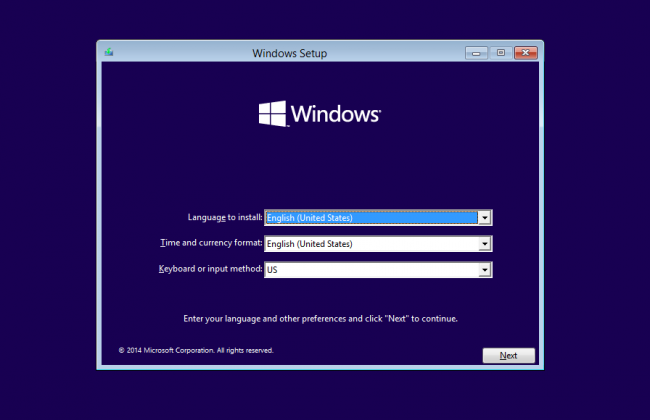
- Choose your installation type. You can either choose Upgrade, which will allow keeping your current files, settings, and apps; or do a fresh clean installation by picking Custom. In this example, we’ll be choosing custom to do a fresh Windows installation.

- To install Windows, you need a partition on your hard drive for storing system files. Your computer’s hard drive is a physical storage device, while partitions divide up that storage space into separate parts.
- Note: If you haven’t yet backed up your hard drive, you may want to stop now, back everything up and start again. Once you’ve deleted the partitions you won’t be able to recover the data stored on these drives.
You can either use one of the existing partitions on your hard drive by formatting it or you can delete the ones there and create new ones from fresh instead: - To use one of the existing partitions, select it, and click Format.
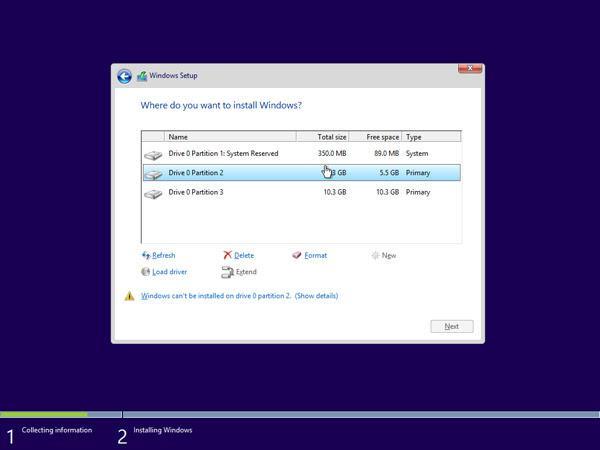
- To delete the existing partitions, select each one and click Delete, then OK.
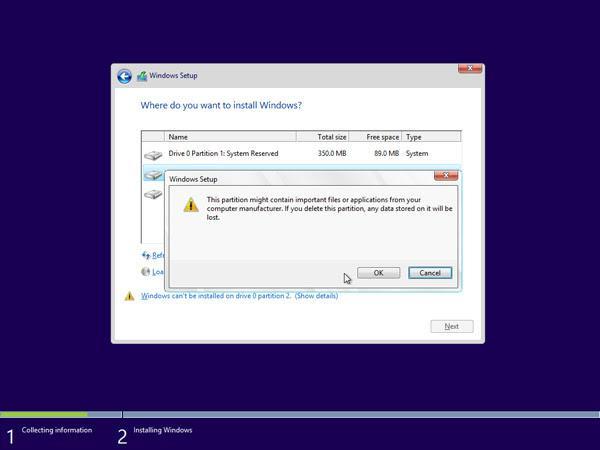
- Note: If you haven’t yet backed up your hard drive, you may want to stop now, back everything up and start again. Once you’ve deleted the partitions you won’t be able to recover the data stored on these drives.
- If you’ve deleted all the existing partitions, your harddrive’s space will be unallocated, and you’ll need to create new partitions. If you just formatted an existing partition, then skip to Step 7 now. To create new partitions:
- Click Drive options (advanced).
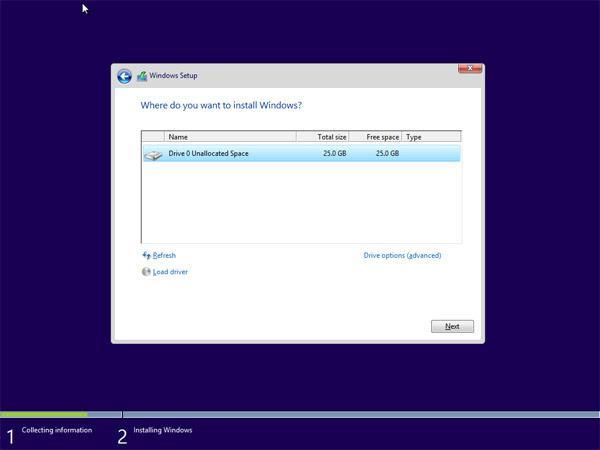
- Now click New and choose the size for your new partition, then click Next.

- Windows will now create a new partition for storing system files. Click OK to accept.

- Repeat this process if you wish to create more partitions.
Once you’ve finished creating all the partitions you want, format each one except for the partition you want to store your Windows system files on. Select the partitions one by one and click Format, then OK when prompted.

- Click Drive options (advanced).
- Now select the partition where you want to install Windows and click Next. The Windows 10 installation will begin. Your computer may reboot a few times during the process. This is normal.

- After the installation is complete, your computer will automatically restart one last time. When it starts up again for the first time, you’ll be able to choose more of your settings, or you use express settings recommended by Microsoft.
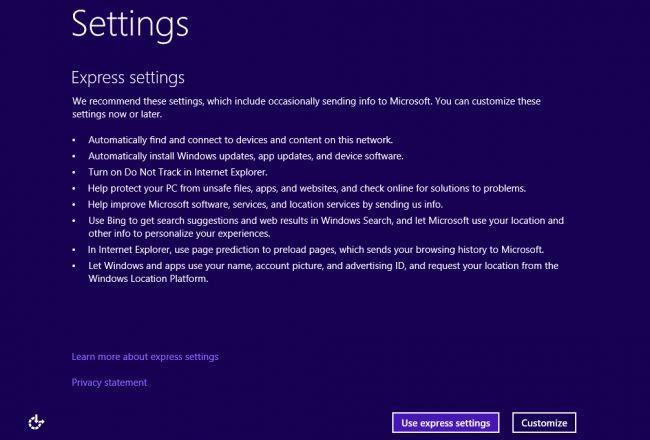
- Finally, sign in to your Microsoft account to use some of the new features with Windows 10 such as password recovery, and to access One Drive. If you don’t want to sign in with your Microsoft account, click Skip this step and follow the instructions to create a local user account instead.
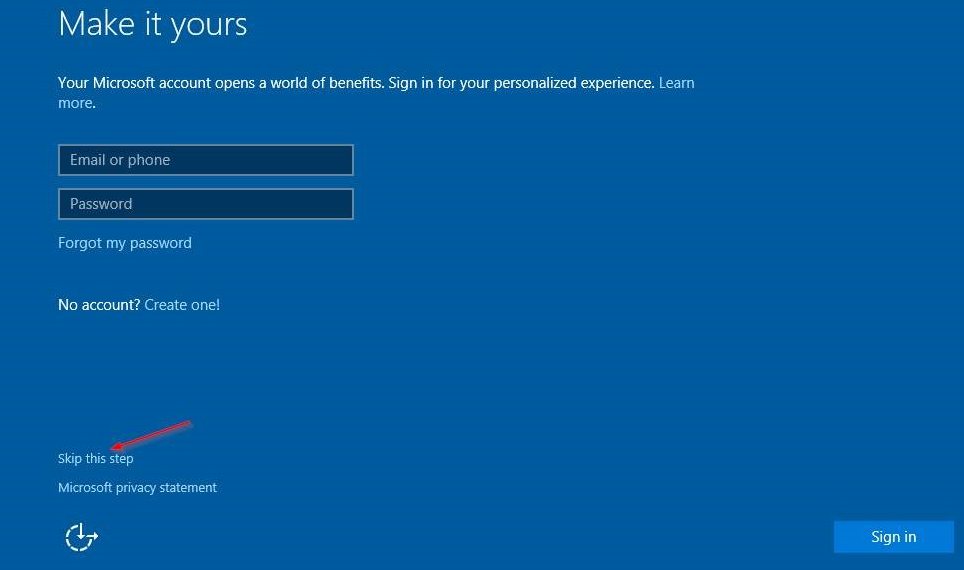
You are done.




